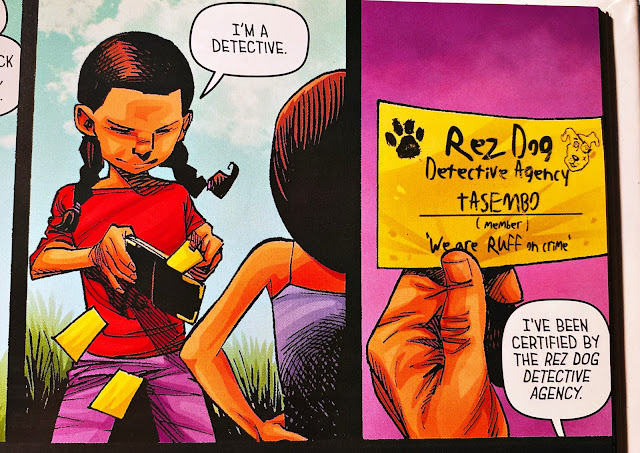My late husband, Elmer Grape, loved Halloween as much as Christmas, maybe
even a little more. He always said kids liked to be scared. Nothing to hurt
them, just something fun scary. So when Halloween rolled around, he was like a
little kid himself. Every October 31st,
I think of our Spook Houses in the mid-1970s. Our house in Houston had a sidewalk leading from the driveway to the front
door located under an overhang eve, a little wider than the walkway. Elmer was
a commercial construction superintendent and had access to rolls of black
plastic, Visqueen. Like garbage bags but thicker and blacker. He hung the
plastic from the overhang making a dark corridor to our front door where an
evil looking Jack-O-Lantern sat. Kids would have to walk the ten feet to the
front door and ring the doorbell. I dressed in a long black dress and ratted my
dark hair out, giving me a witchy look as I opened the door. Kids were surprised that someone in costume greeted them.
Elmer sat up in our dark garage, which had small glass windows where he could
look out at the kids who walked up our driveway to ring the doorbell and say
"Trick or Treat." He'd rigged up a PA system and with his normally deep
voice he'd say, "Fee Fie Fo Fum, I Smell The Blood of an Englishman."
Parents standing at the bottom of the driveway, were giggling and encouraging
their kids to go to the front door. I usually had to open the front door and
coax them to come up the walkway corridor to get candy. He would usually add,
"I'll grind his bones to make my bread."
One little boy about 6, was
hesitant so I finally walked halfway to him to give him candy. The boy walked
back to mom and safety. Then Elmer said, "I'll get him next year."
The little boy looked up at mom and said, "Let's don't come back here next
year." I could hear Elmer smothering laughter.
The next year we
had moved to Memphis, Tennessee. We joined the PTA and discovered the
PTA had a fall festival in mid-October, as a fund raiser,
for school. It was their version of a Halloween Carnival. The previous
year
they'd had very successful a spook house.
Without thinking twice
about it,
Elmer and I signed up to be the chairpersons for this one. I won't
detail what all
we did, because this article is about "OUR" spook houses, but I will
say,
Elmer built a wooden coffin to use in the school event. It was shaped
like the
ones you'd see in all those old Western movies. You know, with the
angles at
the top end. He painted it flat black, and it was long enough for him to
lay
his 6 foot, two inch body down inside. As kids came inside the room they
saw
the coffin, as they got near, he'd raise up, sometimes laughing
maniacally. Our school spook house was a huge success, at 25 cents a
ticket many kids came through multiple
time.
Two weeks later was October 31st, "Halloween." Mr. Grape had already planned for it with that coffin.
Again using the black Visqueen, he turned our carport into a spooky room. Of course we
didn't charge kids anything. I was once again dressed witchy, in my long black
dress.
I had a little story, inviting kids inside, telling them of my friend
who had been killed in a horrible accident. If they wanted, they could view his
body and his parts if they would just come inside.
I had a box
with for them to put their hand down into with a bowl of cold wet
spaghetti to feel like guts. Another box held a bowl with cold peeled
grapes for eyeballs and brains.
E. had added one new feature to his coffin, which was resting on a couple of
sawhorses and draped with the black plastic, he cut an opening in the coffin
side in order to stick his arm out and pretend to grab at a kid's arms or hand.
He was also wearing a horrible rubber mask with a plastic eyeball hanging out.
It had slits in order from him to see. As a kid got close he could raise up or
grab, whichever seemed to work.
As the doorkeeper, I would have 2 or 3 kids come in at once. Usually, they
were traveling in groups. Kids had so much fun, they went home and got their
mom and dad to come see the spook house. No one in this neighborhood had ever
done such a thing.
One mom got so shook at the coffin watching another mom
scream and jump, she said, "I think I just wet my pants."
Elmer heard
this and when he raised up, was laughing so hard he had trouble making a scary
sound.
The next year we had to change it all up. We set up our living room with the
coffin against the far wall. We had put a large cloth dummy inside.
We also had big moving blankets on the floor so when you walked in the floor
felt squishy
to walk on. Dim lights barely lit the room. A carved, evil
Jack-O-Lantern had a battery electric candle inside. As kids rang the
doorbell, yelling “Trick or Treat,” I
opened the door, letting only 2 or 3 inside, they could see the coffin across
the room but couldn’t see inside it.
 |
Elmer never dressed up for Halloween
but one time his little sister made him
up for her grandson's birthday party,
the only pic I have of him in costume. |
I’d tell my little story of my friend who had
the terrible accident and had the "guts and eyeballs" for them to
feel. Then I’d steer them to the coffin and while they're concentrating
expecting Elmer, he’d come out of the coat closet by the front door, moaning
like a ghost. Wearing his horrible mask,
and a flashlight in his belt shinning up towards his face, he was scary.
Some of the parents came inside, then neighbor lady started screaming,
"Damn you, Elmer Grape, I thought you were in that coffin."
That year was when mean people put razor blades or poison in candy treats
and it became too dangerous for kids. Elmer and I both were angry and
disappointed. The fun of Halloween was dead.
However, in the
nineties after we
moved back Austin we had a few kids walking their own
neighborhood with parents. Our niece Dona and her family lived behind
us. Her young daughter Tiffany and Tiff's best friend, Amber would walk
around the block with their moms. Somewhere along the way,
Uncle Elmer would jump out and scare them.
Along the whole way, they were
expecting him but never knowing exactly when or where. The girls are now
adults with
nearly grown kids of their own but at Halloween they always tell the
story of
being scared by Uncle Elmer.]
So is it any wonder I write mysteries? Or that we
owned a mystery bookstore for nine years? It's just a shame there are
no photos or videos. People didn't have cell phones or digital cameras then and
even if I'd thought of it, I was too busy telling the story and handing out
treats.






















.jpg)











